Key Takeaways
- Assisted living costs vary by location, level of care, and included amenities.
- Families often combine savings, insurance, and government aid to cover costs.
- Personal savings or home equity can help fund long‑term care expenses.
- Long‑term care insurance policies may cover part of assisted living costs.
- Medicaid waivers, VA benefits, and state programs can reduce financial strain.
Paying for Assisted Living
When you’re considering assisted living for yourself or a loved one, one of the first questions that comes to mind is often about cost. You want to know how you’ll manage the financial side of this important life transition. The good news is that you have several options available to help make senior care more affordable and manageable.
Paying for assisted living typically involves a combination of:
- Personal savings and private payment methods
- Long‑term care insurance benefits
- Government assistance and support programs
Assisted Living Costs and Payment Options
Assisted living costs vary depending on your location, the level of care needed, and the amenities you choose. However, most communities charge a monthly fee that covers your activities and lifestyle.
Usually, this rate gives residents access to:
- A private or semi‑private apartment
- Three daily meals
- Housekeeping and laundry
- Personal care and daily support
- On-site amenities and activities
Some communities offer all‑inclusive pricing, while others use a tiered system based on individual care needs. If a person needs additional care, this fee may increase.
How Most Families Pay for Assisted Living
When planning for assisted living, most families use a combination of personal funds, insurance benefits, and government programs. These different payment options can work together to make care more affordable and flexible for your loved one’s needs.
Personal Savings and Private Payment Methods
Many families start by using personal savings, retirement accounts, and investments to cover assisted living costs. This approach gives you the most flexibility in choosing your loved one’s future community and care options.
Selling a home is another common strategy. The equity can often cover several years of retirement or care expenses, depending on the property’s value and the community’s pricing. If you’re not sure where to begin, try consulting a financial advisor in your area. They can help you create a proper plan to budget for your loved one’s care.
Long-Term Care Insurance Benefits
If your loved one has a long‑term care insurance policy, it may cover part or all of their senior living costs. So, before you make any decisions, try reviewing any existing insurance policies. The policy should outline what is and isn’t covered, and what documentation you’ll need.
Most policies include a waiting period—typically 30 to 90 days—before benefits begin. However, because every policy and provider is different, make sure you reach out ahead of time. Your provider can answer any questions and outline any specifics that affect coverage.
Government Assistance and Support Programs
Medicaid waiver programs in many states help cover assisted living costs for qualifying individuals. These programs help older adults receive care in a community setting rather than a nursing home.
Some other government assistance options include:
- Veterans Affairs (VA) Aid and Attendance. This provides additional monthly income to eligible veterans and their spouses who need help with daily activities.
- Supplemental Security Income (SSI). This offers monthly financial support for older adults with limited income or resources.
- State-funded senior programs. Many states provide grants or subsidies that help pay for housing, meals, or personal care.
These programs can significantly ease the cost of senior living, but eligibility and coverage vary by location. If you’re not sure where to begin, you can always reach out to potential communities in your area, or contact a financial advisor.

Working with Your Assisted Living Community
Most assisted living communities have experienced financial coordinators who can help families navigate available payment options. These professionals understand how different funding sources—like private savings, insurance, and government benefits—work together. They can also recommend professional resources in your area to help you plan ahead.
Ask about any financial assistance programs the community might offer. Many communities want to help families find ways to afford the care they need. Even better, some communities offer flexible payment plans or accept multiple forms of coverage.
This is why reaching out to a potential community is so important. They can help you assess your options, create a proper plan, and make senior living more accessible for your loved one.
Planning Ahead for Financial Success
Even if your loved one doesn’t need care right away, planning ahead makes a significant difference. It gives you time to explore all your options and make the most of available resources. However, it also lets you spend time looking through your loved one’s options so you can make the right choice for the future.
At Valley View Senior Living, we make this process easier. We understand that navigating the financial aspects of senior living can feel overwhelming. Our caring team is here to support you every step of the way, help you explore payment options, and find solutions that work for your family. That’s what you deserve, and we’re always happy to help. Book a tour with us today to explore our community and learn how we can support your family.


